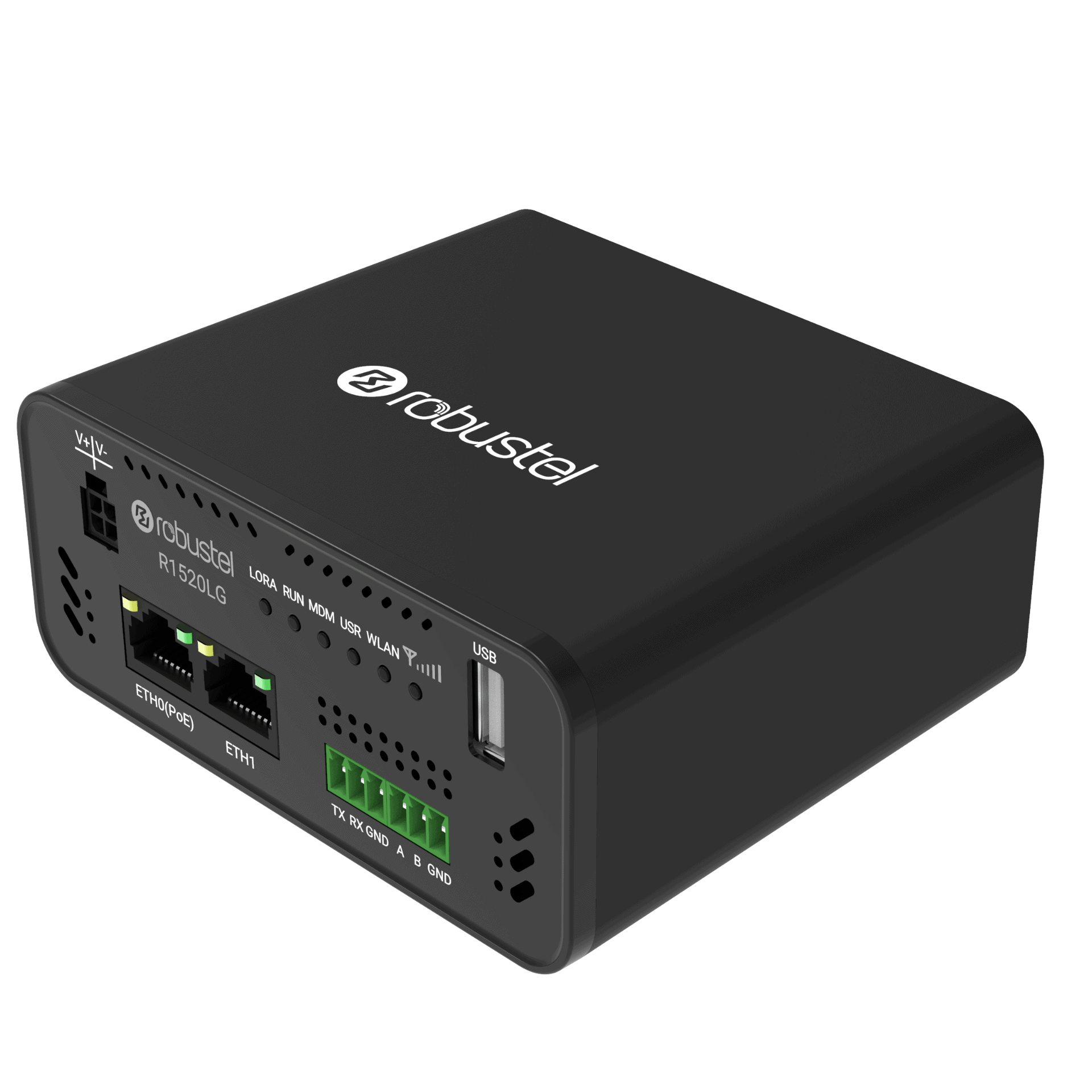LoRaWAN Connectivity for Smart Buildings, Sensors and BMS Integration
A Robustel Application Example
Application Example – Fast Facts
Industry
Smart Cities, Smart Buildings, Facilities Management, Commercial Real Estate
Product(s)
Robustel R1520-LG LoRaWAN Gateway; RCMS (RobustLink, RobustVPN)
Challenges
Building owners and facility managers need live insight into temperature, air quality, leaks, access state and energy use across multiple floors and sites. Most buildings were not wired for this level of monitoring, and tying into tenant networks is slow and political.
Expected Outcomes
Deploy wireless LoRaWAN sensors where you need data (plant rooms, risers, tenant areas, basements), connect them to an R1520-LG, and send that data out over cellular instead of local IT. The result is portfolio-wide visibility, fewer site visits and better evidence for comfort, energy and SLA discussions.
Turning Buildings into Measurable Assets
Most commercial buildings already have a BMS somewhere in the plant room, but that doesn’t mean the operator can actually see what’s happening in every riser, tenancy, or equipment room. Comfort complaints, hot/cold spots, air quality questions, unexplained after-hours energy usage — they all create noise, and the traditional answer is “send someone to site with a handheld meter.”
The R1520-LG gives building owners and FM providers a different path. It lets you drop in battery-powered LoRaWAN sensors for things like temperature, CO₂, leaks, access state, door counts, tank levels, and more, even in areas with no structured cabling. The gateway then backhauls that data over 4G/LTE to your chosen platform. You get building insight without reopening ceilings, running new Ethernet, or asking tenants to give you LAN access.
Business Challenges
Before we get into how it works, here are the pressures facility operators tell us about:
- Retrofit disruption limits what you can do: Pulling new cable through an occupied tower, hospital, or transport hub means ceiling access, night work, and tenant pushback. In some sites you cannot get that work window at all.
- Limited visibility beyond the plant room: Most comfort, leak, and air quality issues start in tenant areas and back-of-house spaces that were never wired for monitoring. Those areas often have no Ethernet, no spare switch ports, and no safe place to mount a controller.
- High cost of sending someone to “go check”: Every leak alarm, temperature complaint, or ventilation concern turns into a site visit. Across multiple properties this becomes slow, expensive, and hard to staff.
- Energy and sustainability reporting pressure: Leadership and anchor tenants now want hard data on after-hours energy use, CO₂ levels, and temperature stability. Manually collecting this across an estate is slow and unreliable.
- IT and tenancy boundaries: In mixed-use or multi-tenant buildings, facilities teams often don’t control the corporate network. Asking to connect monitoring hardware to a tenant LAN can lead to long approval cycles or a refusal.
Solution Overview
The R1520-LG is deployed per building, per floor, or per plant area. It acts as a LoRaWAN gateway on site and a cellular uplink out to your platform. No dependency on tenant IT.
- LoRaWAN sensor network inside the building: The R1520-LG acts as the LoRaWAN gateway. Low-power wireless sensors (temperature, humidity, CO₂, leak detection, door state, tank level, sub-metered energy) are placed in risers, ceiling voids, plant rooms and basements without pulling new Ethernet or opening ceilings.
- Clean backhaul over 4G/LTE: The R1520-LG forwards sensor data over cellular instead of using the tenant LAN. There’s no need to request VLANs, negotiate firewall rules, or wait for corporate IT to approve building monitoring devices.
- Portfolio view across sites, not just one building: Once gateways are deployed, operations can see where a floor is running hot, which riser is reporting repeat leak events, which plant room is drifting out of range, and which tenancy is still drawing heavy power after hours.
- Targeted response instead of blind call-outs: Because you already have a live feed of building conditions, you can prioritise the visits that matter and send the right person with the right part. You’re not dispatching someone just to “go take a look.”
- Central control with RCMS: RCMS (Robustel Cloud Manager Service) lets you monitor gateway health, push configuration, and roll out firmware updates in batches. You operate a portfolio, not a pile of one-off installs.
Expected Customer Outcomes
What success looks like for the Operator and the Integrator/Installer
For the operator / facilities owner:
- Portfolio-wide visibility without rewiring: You get live data on comfort, air quality, leak risk, and energy hotspots across all managed sites, including spaces that were never instrumented.
- Faster, better-prioritised response: You know which alert is urgent before you send someone across town, which cuts wasted site visits and improves service quality for tenants.
- Evidence you can take into a meeting: You have timestamped data for temperature, humidity, CO₂, and after-hours energy use. That supports tenant SLA discussions, internal sustainability reporting, and compliance requests.
- Minimal tenant disruption: You add sensing and monitoring in live buildings without opening ceilings on every floor or touching a tenant’s private network.
For the integration / service partner:
- Repeatable deployment model: Install an R1520-LG, drop in LoRaWAN sensors, bring up cellular backhaul, hand over a working data feed. You can apply the same pattern to one building or a hundred.
- Less time negotiating IT access: Because the gateway uses its own cellular uplink, you avoid long delays waiting for permission to join restricted corporate networks.
- Service beyond the install: You can offer ongoing monitoring, alerting, and reporting as a managed service instead of relying only on one-time cabling and commissioning work.
Featured Products
Robustel R1520-LG LoRaWAN Gateway

RCMS Cloud Device Management

Talk to an Expert
If you manage buildings, campuses or multi-tenant space and you’re being asked for “better visibility” without budget for major rewiring, this is often the first practical step.
Let’s talk about where you need data most — and how fast we can get it there using LoRaWAN and cellular.
